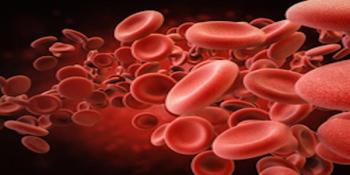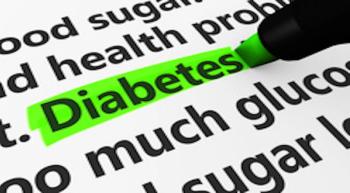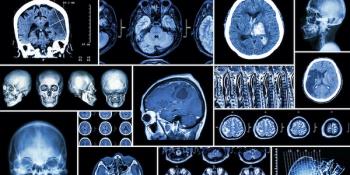
Patients with polycythemia vera (PV) or essential thrombocythemia (ET) had a higher risk of thrombotic events than the general population, which was associated with mortality in a recent study.

Patients with polycythemia vera (PV) or essential thrombocythemia (ET) had a higher risk of thrombotic events than the general population, which was associated with mortality in a recent study.

Among patients with atopic dermatitis, the risk and severity of acne varied based on age and sex.

Robert Sidbury, MD, MPH, chief, Division of Dermatology, Seattle Children's Hospital, discussed the psychosocial and behavioral issues faced by patients with atopic dermatitis, particularly those with severe disease.

The mortality rate for patients with systemic lupus erythematosus (SLE) was greater than one-third if they were admitted to an intensive care unit (ICU).

This new investigation from the United Kingdom evaluated health care professionals’ (HCP) perceptions and implementation of practices that focus on open-source automated insulin delivery (OS-AID).

Eosinophilic esophagitis (EoE) is still a new, rare disease and as such providers would benefit from more education about this condition, said Colette Romero, whose son has EoE.

Using telemedicine to monitor patients with rheumatoid arthritis (RA) initiating disease-modifying antirheumatic drugs (DMARDs) was highly cost-effective and resulted in similar health outcomes compared with in-person monitoring.

Repolarization dispersion has been linked to echocardiographic measures of diastolic dysfunction in past research, and a recent study found it potentially indicative of pulmonary arterial hypertension severity.


Ron Do, PhD, associate professor, Charles Bronfman Institute for Personalized Medicine at Mount Sinai, and Iain Forrest, MD-PhD candidate in Dr Do’s lab, explain their study's implications for providers and how age plays a role in genetic variant penetrance.

Due to advances in the treatment of spinal muscular atrophy (SMA), the lifespan of patients with the disease has increased significantly, allowing them to enter adulthood. However, the change in SMA prognosis has also led to a knowledge gap in the natural history, management, and treatment strategy for adult patients, according to the researchers.

Quality of life for children with asthma may be influenced by psychological and sociocultural determinants of health.

A retrospective, quasi-experimental study found that patients admitted to the intensive care unit (ICU) for acute respiratory failure (ARF) saw better outcomes when an inter-ICU transfer came within the first 2 days of admittance.

In this new analysis, results showed that CCL3, CXCL8, CXCL9, and CXCL10 may be indicators of disease severity.

Glenn Balasky, executive director of Rocky Mountain Cancer Centers, previewed topics and potential takeaways from his discussion on building a community oncology practice for the future at the 2022 Community Oncology Conference.

This new study investigated cardiovascular disease (CVD) risk outcomes among patients with a serious mental illness (SMI) attending primary care clinics that were part of HealthPartners and Park Nicollet in Minnesota and Wisconsin.

Researchers found that low levels of vitamin D and the prevalence of peripheral neuropathy were common in patients with multiple myeloma, suggesting that addressing the former could help prevent the latter.

Administering dupilumab for other atopic conditions, including atopic dermatitis (AD) and asthma, in patients who also have eosinophilic esophagitis (EoE), resulted in improved EoE symptoms.

A recent study found that a selection of non-invasive markers could help identify high-risk children with pulmonary arterial hypertension associated with congenital heart disease.

Women are known to experience more adverse events with chemotherapy, but a recent study found an increased risk across therapy types, especially immunotherapy.

Coverage of our peer-reviewed research and news reporting in the health care and mainstream press.

A new opinion indicates paying those with substance use disorder to stay clean could be legal; the 2020 Census undercounted some racial minorities; the true global COVID-19 death toll could be 3 times higher than the official tally.

Soumya Chakravarty, MD, PhD, FACP, FACR, strategic lead, Rheumatology Therapeutic Area at Janssen, spoke on adverse patient outcomes caused by diagnostic delays in psoriatic arthritis and progress made to address this unmet need.

Across these ethical considerations, the researchers emphasize the importance of collaborating with patients and their caregivers.

This new study of pediatric patients with type 1 diabetes from France and Belgium investigated the effectiveness of insulin delivery via closed-loop and open-loop systems.

David Penberthy, MD, MBA, medical director of radiation oncology at Southside Regional Medical Center, discusses his theme as president-elect of the Association of Community Cancer Centers (ACCC) and what initiatives and discussions he looks forward to addressing over the next year.

Worse cognitive performance was seen among children prior to migraine attack onset compared with those who never developed migraine.

A recent review found that patients with chronic kidney disease (CKD) have fewer daily steps than the recommended physical activity benchmark, which has implications for their CKD prognosis.

This new study evaluated the influence of transmission bottlenecks on HIV-1 infection virulence by comparing outcomes between penile-vaginal intercourse and anal intercourse, and found more severe disease among heterosexual individuals compared with men who have sex with men.

Reasons for pursuing genomic profiling among patients with advanced bladder, renal, and prostate cancers included guiding treatment and improving treatment response, in which age and education level were found to significantly influence shared decision-making.

259 Prospect Plains Rd, Bldg H
Cranbury, NJ 08512
© 2025 MJH Life Sciences®
All rights reserved.
